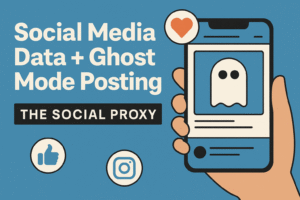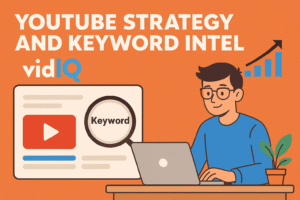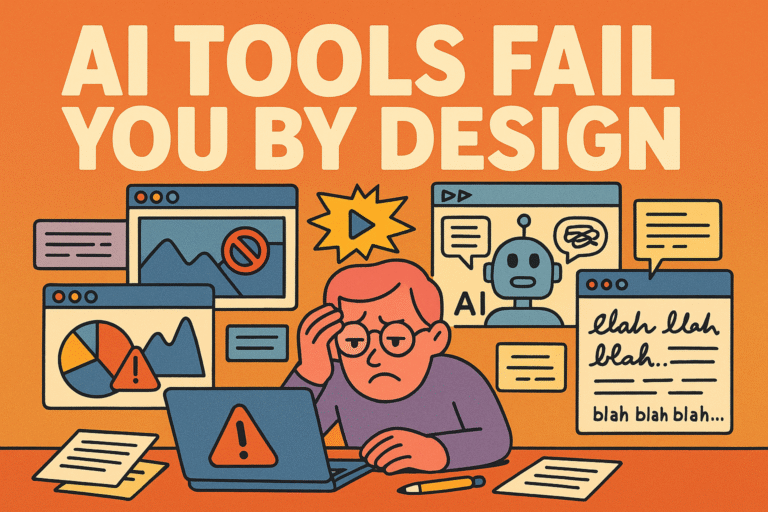How Most AI Tools Fail You by Design
There’s a pattern. Once you’ve tested enough AI tools, you start seeing it.
They all start the same—shiny homepage, overconfident tagline, and a flood of Twitter threads hyping “next-gen” features. But once you open the dashboard, reality sets in.

Here’s what most tools get wrong:
-
They do too much
One tool claims to write blog posts, edit videos, automate emails, summarize books, and grow your socials. Sounds amazing—until none of it works well. These tools fail because they spread too thin. They want to be everything to everyone and end up being nothing to anyone. -
The UI looks good, but the core is broken
Many tools look polished until you actually try to use them. Then the editor lags. The export fails. The AI loses your input mid-task. You spend more time fixing the output than it would’ve taken to just do it yourself. -
They lie about memory and context
Tools claim they “remember your brand voice” or “learn from your data.” Then you ask them to rewrite something in your voice—and they give you generic fluff that could’ve been written by a high school intern. Fake memory is worse than no memory. -
They chase virality, not reliability
New features get rolled out weekly—not because they’re needed, but because they trend well on Product Hunt. Core bugs go unfixed while the devs promote some flashy new AI avatar that nobody asked for. -
Support disappears the moment you pay
Ask a pre-sale question? Response in 20 minutes. Report a bug after subscribing? Silence for days.
These aren’t edge cases. This is the norm. The AI space is full of tools that look good on launch day and fall apart under pressure.
That’s why this list matters. Because most tools don’t fail you accidentally. They fail you by design.
1. Writing and Repurposing Content — Blaze AI
Let’s be real—most AI writing tools are barely more than dressed-up templates. They crank out bland paragraphs, lose your tone halfway through, and start repeating themselves like a nervous intern under pressure. Blaze AI was the only one that didn’t collapse under actual use.
What makes it different? It’s not just a “writer.” It’s a content strategist disguised as a tool. The magic isn’t in the long-form drafts—it’s in how Blaze breaks one idea into many. You paste in a blog post, YouTube transcript, or outline, and it explodes that content into tweets, hooks, CTAs, short-form video captions, Instagram carousel copy—you name it. And it doesn’t just regurgitate your words. It rewrites with tone awareness and formatting that’s actually built for the platform.
Even better, Blaze gives you a full dashboard to schedule, test, and track those outputs. So instead of creating 12 pieces from scratch, I create one strong piece and let Blaze fragment it into a week’s worth of optimized content.
It’s saved me hours—every week.
But more than time, it saved energy. I’m no longer stuck staring at a blank screen wondering, “How do I make this post again but shorter?” Blaze does it better than I would’ve.
If you’re running a solo brand or publishing daily, you don’t need a writing assistant.
You need a repurposing machine.
And right now, Blaze is the only one that actually works under pressure.
2. Hashtag and Social SEO — Flick
There’s a reason your Instagram posts aren’t getting traction—and no, it’s not “the algorithm hates you.” It’s because you’re guessing. Most creators treat hashtags like a random moodboard. They plug in what feels relevant, cross their fingers, and hope for views.
Flick kills the guesswork.

This isn’t just a tool that spits out hashtags. It gives you data-backed visibility strategy. It shows you which tags are oversaturated (aka you’ll get buried), which ones are banned (and silently killing your reach), and which have actual potential based on your account size.
I tested it against multiple free tools. Here’s what happened:
-
The free ones gave me lists with several shadowbanned tags.
-
Flick flagged them instantly—and showed why they were toxic.
-
It then suggested lower-competition tags that landed me on Explore. Twice.
That’s the point: Flick adapts to your growth stage. It doesn’t just chase volume. It matches tags to your actual engagement velocity. So you’re not just throwing tags around—you’re positioning content where it can actually rank.
Bonus: it also helps schedule posts, track performance, and refine strategy over time. I didn’t expect to keep it beyond the trial. I’ve now used it for over 8 months. It’s one of the few tools I recommend to creators even if they don’t like AI—because it doesn’t feel like AI. It feels like insight.
If you’re serious about growing on Instagram or TikTok, stop rolling dice.
Use the data. Flick has it.
3. Full Funnel Automation — Systeme.io
Funnels are where most creators lose the plot. They duct-tape five tools together—email, landing pages, checkout, course delivery, automation—and hope nothing breaks mid-launch. Something always does.
I tried going that route. It sucked.
That’s why I tested Systeme.io.
It doesn’t try to be fancy. No AI buzzwords. No viral launches. Just a platform that does what most “all-in-one” tools claim and fail to do: build a full funnel in one place without bleeding your budget.
Here’s what stood out after real use:
-
I built a landing page and email automation in under 30 minutes—and it worked. No broken links. No weird formatting issues on mobile.
-
The email editor isn’t overloaded. It’s clean and focused. If you’ve used Mailchimp or ConvertKit, you’ll appreciate the simplicity.
-
Upsells, course access, lead magnets—it’s all native. No Frankenstein stack.
-
Support? Real people, real replies, within 24 hours.
But what really sold me was how it handles scaling without stress. Other tools start you off with a “free plan” that becomes useless the moment you hit actual traffic. Systeme AI gives you what you need upfront, with no hidden limits on automation triggers or lead counts that suddenly appear after you’ve built your funnel.
This is the first time I’ve launched a product without fighting the software.
That’s rare.
If you’re a creator, coach, or freelancer trying to build an email list, sell something, or just set up a basic customer journey that doesn’t break, Systeme is what I now recommend before anything else.
You don’t need a PhD in funnels.
You need something that works when it counts.
4. Social Media Data + Ghost Mode Posting — The Social Proxy
If you’ve ever managed multiple Instagram accounts, automated posting across time zones, or tested “questionable” growth tools—you already know this truth:

Your IP address will get you caught.
Social platforms are smart. They track login behavior, device IDs, even your scroll speed. If anything looks automated or unnatural, your accounts get flagged. Best-case: reduced reach. Worst-case: instant ban.
That’s where The Social Proxy comes in.
This isn’t your average sketchy proxy service. It’s a residential proxy network built specifically for social platforms—Instagram, TikTok, Facebook, the whole mess. And unlike those generic “buy 50 proxies for $5” scams, this one actually gives you clean, reliable IPs that rotate properly, mimic real users, and don’t trip security flags every two hours.
Here’s what I actually used it for:
-
Managing three IG accounts from one dashboard without getting flagged
-
Testing an automation tool on TikTok that required multiple logins
-
Running ghost-posting scripts on a client’s account without nuking their reach
Most proxies slow things down or trigger CAPTCHA hell. This didn’t.
Setup was fast. IPs held up under stress. I didn’t have to baby anything.
It’s not flashy. It doesn’t come with a viral marketing campaign or slick UI. But if you’re doing anything serious at scale, this is the tool that keeps your operation under the radar.
No hype, just protection.
If you’ve ever asked “Why did my account get restricted?”
Check your IP. Then switch to this.
5. Video Content Creation — InVideo AI
If you’re not making video content in 2025, you’re invisible.
But here’s the problem: most creators hate editing. It’s time-consuming, clunky, and soul-crushingly tedious.
That’s where InVideo AI came in for me.
I wasn’t looking for another drag-and-drop editor. I wanted something that could turn written content into scroll-stopping videos without micromanaging every frame.
Here’s what I did to test it:
-
Took one of my top-performing blog posts
-
Dropped it into InVideo
-
Chose a visual style, hit generate
-
Got a ready-to-publish video in under 6 minutes
The result?
Automatic subtitles, background music, cutaways, b-roll, transitions—all handled. No awkward jumps. No weird pacing. It actually looked polished. Not like a template, not like AI vomit—like something you’d see posted by a real brand.
But the real value came when I started scaling:
-
Turned Medium articles into Reels
-
Converted Reddit posts into YouTube Shorts
-
Took old newsletters and repackaged them for TikTok
And here’s what you need to know:
It’s not perfect. You’ll still want to tweak clips, adjust audio, maybe rephrase some text. But InVideo AI got me 80% of the way there, and that’s a massive win.
If you’re a content creator trying to do everything solo, this tool saves hours.
Not in theory. In real-world content cycles.
Because while others are still storyboarding, I’m already scheduling my third post.
Video doesn’t have to drain you.
Use the machine. Then tweak like a human.
6. YouTube Strategy and Keyword Intel — VidIQ
YouTube punishes guesswork.
If your title misses, your video tanks—no matter how good your content is.
I used to post videos and just hope they hit. Sometimes they did. Most times, they didn’t. That’s when I brought in VidIQ—not as a “views booster,” but as a diagnostic tool to figure out what actually works.

Here’s what changed:
-
I stopped writing cute titles and started writing keyword-anchored ones
-
I used VidIQ’s real-time keyword scoring to find actual ranking opportunities
-
I dissected competitor videos using hidden tags and performance metrics
-
I ran A/B tests on thumbnails and optimized old videos using the data
The difference was immediate.
I had a small channel hovering around 200–300 views per video. After restructuring just 3 uploads using VidIQ’s keyword stack and performance tracker, one broke 20k in two weeks. No new gear. No new scripts. Just better targeting.
That’s what VidIQ gives you—visibility into what’s working and what’s missing. Not a magic button, but a map.
The YouTube algorithm doesn’t care if your video is good. It cares if it’s clickable, relevant, and indexable.
VidIQ helps you hit those markers without relying on luck.
If you’re serious about using YouTube for traffic, authority, or income, this tool pays for itself fast.
You’re not competing with other creators. You’re competing with data-backed channels. This is how you even the field.
7. Tactical Hashtag Wins — MetaHashtags
Most hashtag tools sell you on volume.
MetaHashtags sells you on timing.
It’s not the deepest platform. It doesn’t give you analytics dashboards or full-on growth strategies like Flick. But what it does? It does fast.
This tool is built for one thing: helping your post get seen right now.
Here’s how I used it:
-
Dropped in a niche keyword related to a client’s new product
-
Got back a ranked list of trending, low-competition hashtags—updated in real time
-
Filtered by region and language
-
Slapped the top 15 on a struggling post
The result:
That post jumped from 80 impressions to 1,900 in under 6 hours. No changes to the content. Just better targeting.
MetaHashtags works best when:
-
You need a fast fix to escape zero views
-
You’re launching a new account and need immediate visibility
-
You’re testing engagement strategies and want quick feedback
It won’t manage campaigns or schedule content. But it’s the tool you fire up when your numbers flatline and you need tactical recovery.
Think of it like caffeine: fast hit, short burst, and highly effective when used sparingly.
What You’re Really Paying For Isn’t AI — It’s Reliability
Anyone can build a flashy AI tool.
Most devs do. And most of those tools break the second you ask them to do something real.
After testing 47 of them, the pattern was clear:
-
Fancy UI doesn’t mean solid performance
-
Most tools are built for launch, not longevity
The ones that made it into this list? They didn’t just work once. They held up when the pressure was on—when the content was urgent, the audience was watching, or the campaign couldn’t afford a glitch.
That’s what actually matters. Not the pitch, not the roadmap—the fact that it works when you need it to.
So if you’re overwhelmed by options and tired of hype, ignore the buzz.
Test ruthlessly. Keep only what delivers.
And when a tool earns your trust? Keep it sharp—but don’t get sentimental.
AI should amplify you. Not babysit you.



